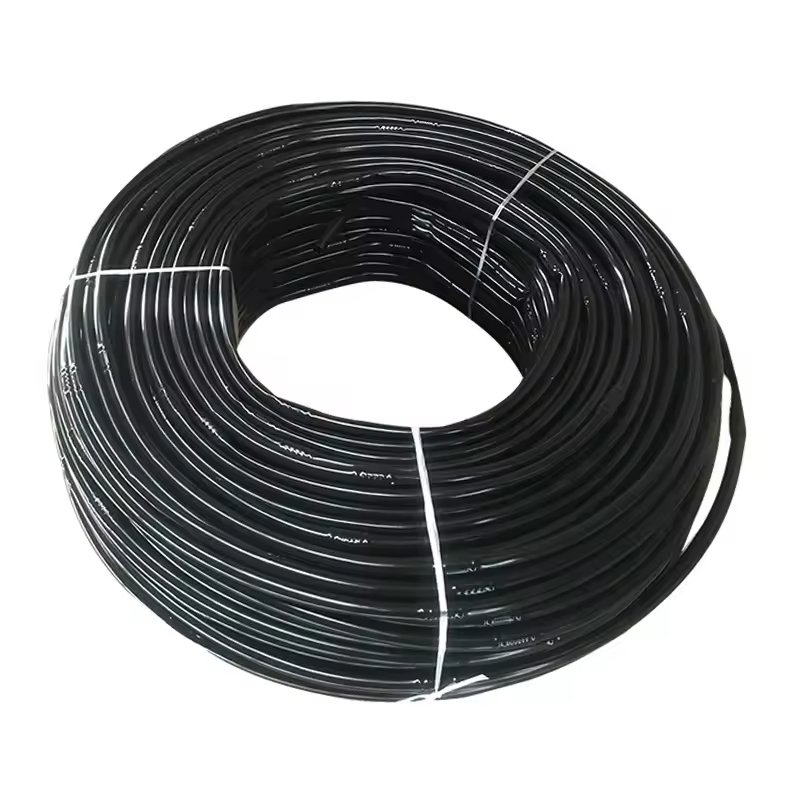

Globally, agriculture is one of the most water-intensive industries. However, with the intensification of climate change and the growing scarcity of global water resources, traditional agricultural irrigation methods face significant challenges. In this context, the emergence of drip irrigation pipe technology has brought about a revolutionary change in agricultural irrigation, becoming an essential tool for promoting sustainable agricultural development.
Working Principle and Features of Drip Irrigation Pipes
Drip irrigation pipes are devices that deliver water directly to the roots of plants in a slow and uniform drip through a low-pressure piping system. By using a precise control system, they provide the exact amount of water required based on the plant’s water needs and growth stage. This irrigation method not only reduces water evaporation and surface runoff but also prevents common issues associated with traditional irrigation methods, such as excessive water supply and soil erosion.
One of the most remarkable features of drip irrigation pipes is their water-saving effect. Compared to traditional flood and sprinkler irrigation methods, drip irrigation pipes can increase water utilization efficiency to over 90%, significantly reducing water waste. This makes them particularly effective in arid and semi-arid regions, where they can help alleviate the tight supply of water resources for agriculture and save valuable water for farmers.
Promoting Crop Growth with Drip Irrigation Pipes
In addition to their significant water-saving benefits, drip irrigation pipes actively promote crop growth. By delivering water directly to the root zone, drip irrigation pipes ensure a uniform and continuous water supply throughout the growing season. This consistent moisture supply helps avoid the uneven growth that can result from under- or over-watering, ensuring healthy crop development and higher yields.
Moreover, drip irrigation pipes can be integrated with precise fertilization systems, enabling fertigation—the simultaneous application of water and nutrients. This combined approach enhances fertilizer utilization efficiency, reduces nutrient loss, and further improves crop yield and quality. In high-value crops such as grapes and strawberries, the application of drip irrigation pipes can significantly enhance fruit quality and market value.
Applications of Drip Irrigation Pipes in Various Agricultural Scenarios
Drip irrigation pipes have a wide range of applications and are suitable for various agricultural scenarios. From large-scale farming operations to small family farms, drip irrigation pipes offer unique advantages. In cereal crop production, they effectively increase the yield and drought resistance of crops like wheat and corn. In orchards and vineyards, drip irrigation pipes provide precise water and nutrient supply to fruit trees, improving both yield and quality. In greenhouse cultivation, the application of drip irrigation pipes meets the precise water needs of plants, reducing the incidence of pests and diseases.
Additionally, drip irrigation pipes are widely used in urban landscaping, flower cultivation, and horticultural projects. Because they can provide the necessary water supply to plants without affecting the landscape, they are increasingly favored in urban greening.
Installation and Maintenance of Drip Irrigation Pipes
Drip irrigation pipes not only offer superior irrigation performance but are also relatively easy to install and maintain. Modern drip irrigation systems typically consist of main pipes, sub-pipes, drippers, and filters. The installation process is simple, making them suitable for various terrain conditions. With advances in technology, the level of automation in drip irrigation systems has continued to improve, with many systems now incorporating sensors and smart control systems for automated management, further reducing the need for manual operation.
In terms of maintenance, drip irrigation pipes are designed for long-term use, with a long service life. Regular inspection and cleaning of filters are key to ensuring the proper operation of the drip system, and replacing drippers is relatively straightforward and cost-effective.
Conclusion
In the global pursuit of sustainable agricultural development, drip irrigation pipes undoubtedly play a crucial role. They not only provide an efficient and water-saving solution for agricultural irrigation but also enhance crop yield and quality through precise irrigation techniques. As drip irrigation technology continues to develop and spread, more and more farmers and agricultural professionals are recognizing its value and applying it across various types of agricultural production.
The promotion and application of drip irrigation pipes not only help alleviate global water resource scarcity but also drive the modernization and sustainable development of agricultural production. In the future, drip irrigation pipes will continue to contribute to global agriculture, helping achieve the dual goals of food security and environmental protection.